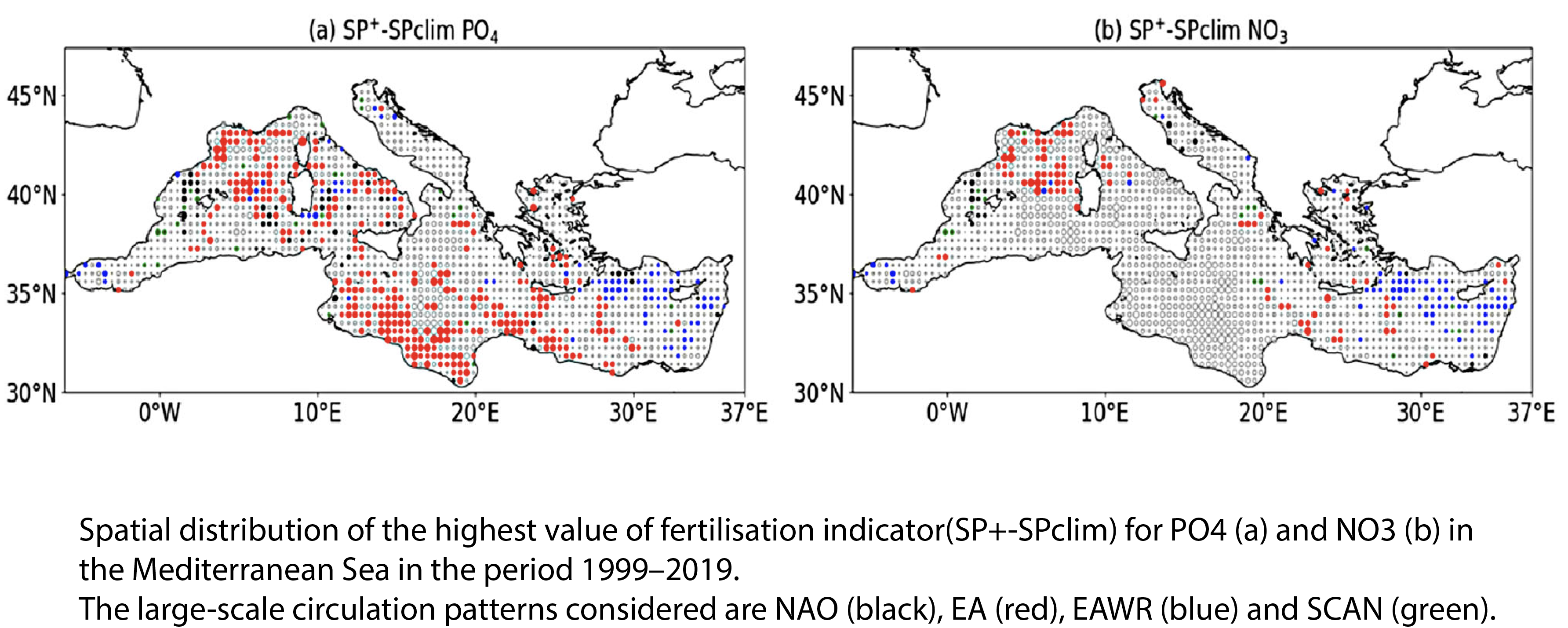Oct 10 2022
The sixth Copernicus Ocean State Report (2022) is now available at LINK (https://marine.copernicus.eu/news/copernicus-ocean-state-report-6-release). The report, written by over 150 scientific expert, provides a comprehensive, state-of-the-art, scientific report on the current conditions and variations in the European regional seas and global ocean. OGS contributed to the Ocean State Report with three chapters:
1) investigating the relationship between the Northern Hemisphere largescale atmospheric circulation patterns and the Winter fertilization (i.e., nutrient enrichment) in the Mediterranean Sea euphotic layer (Chaper 2.6)
2) computation of ecosystem indicators related to trophic status and ocean fertility, derived from combinations of nutrient availability, primary productivity, chlorophyll, and fish landings in the Mediterranean Sea (Chapter 3.7)
3) analysis of the impact of Medicane Ianos (September 2020) in the physical and biogeochemical properties of the impacted area Ionian Sea (Chapter 4.5)
Main findings are that:
1) The potential fertilisation indicator, based on percentile distribution of winter nutrient distribution, tracks the relationship between winter vertical mixing and the largescale atmospheric circulation patterns: western Mediterranean sea is influenced by the East Atlantic (EA) atmospheric pattern, whereas Aegean Sea, Rhode Gyre and Cretan areas are mostly impacted by East Atlantic/Western Russian (EAWR).
2) The winter surface nutrient content can be used to predict months in advance the total amount of phytoplankton biomass to be developed in the following warm seasons, and in some cases provide some indications also on fish landings (e.g., a predictor of ocean fertility).
3) The medicane Ianos, which impacted the Ionian Sea and Thessaly area from 17th to 20th September 2020, was correctly predicted by the Copernicus Mediterranean model system. The medicane had wind speeds up to 110 km/h, torrential rain and flooding, and impacted marine conditions causing wave heights up to 6 m, surface current of 2 m/s, sea level rise up di 0.7 m and enhanced vertical mixing that favoured local and short lasting productivity increase.
